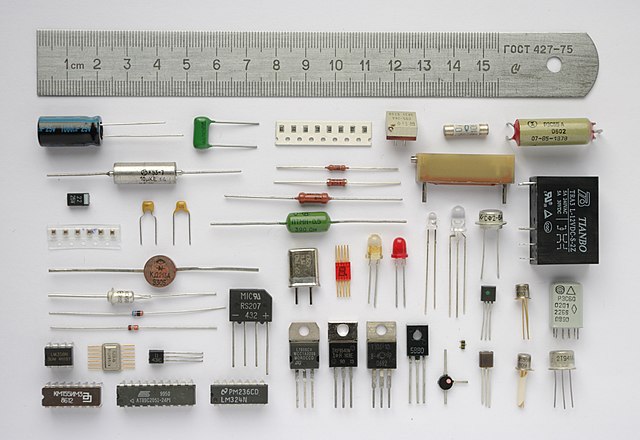Lee de Forest was an American inventor and a fundamentally important early pioneer in electronics. He invented the first practical electronic amplifier,
the three-element "Audion" triode vacuum tube in 1906. This helped start the Electronic Age, and enabled the development of the electronic oscillator. These made radio broadcasting and long distance telephone lines possible, and led to the development of talking motion pictures, among countless other applications.
Lee de Forest c. 1904
De Forest, some time between 1914 and 1922, with two of his Audions, a small 1 watt receiving tube (left), and a later 250-watt transmitting power tube (right), which he called an "oscillion".
American DeForest Wireless Telegraph Company's observation tower, 1904 Louisiana Purchase Exposition at Saint Louis, Missouri
Ohio Historical Marker. On July 18, 1907 Lee de Forest transmitted the first ship-to-shore messages that were sent by radiotelephone
Electronics is a scientific and engineering discipline that studies and applies the principles of physics to design, create, and operate devices that manipulate electrons and other electrically charged particles. Electronics is a subfield of electrical engineering which uses active devices such as transistors, diodes, and integrated circuits to control and amplify the flow of electric current and to convert it from one form to another, such as from alternating current (AC) to direct current (DC) or from analog signals to digital signals.
Modern surface-mount electronic components on a printed circuit board, with a large integrated circuit at the top
One of the earliest Audion radio receivers, constructed by De Forest in 1914
Various electronic components
Through-hole devices mounted on the circuit board of a mid-1980s home computer. Axial-lead devices are at upper left, while blue radial-lead capacitors are at upper right.








